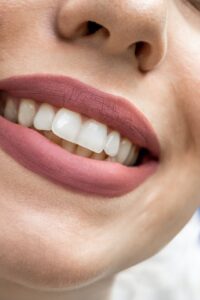Lip fillers, often referred to as dermal fillers, are injectable substances used to enhance the appearance of the lips. They can add volume to thin lips, define the lip border, and create a more symmetrical lip shape.Despite the widespread popularity of this procedure, it's common to have some inquiries about it.In this article we will answer some of the most common questions about lip fillers, helping you to make the best decision for you.
What are the different types of lip fillers?
Among the various types available, the most frequently used lip filler is hyaluronic acid (HA) filler. This compound occurs naturally in the skin, making it biocompatible and typically well-received by the body.As a result, the chances of adverse reactions or intolerances are relatively low with HA fillers.But, there are other options made readily available, such as collagen fillers, poly-L-lactic acid (PLLA) fillers, and fat grafting. These alternatives have their distinct compositions and characteristics.Collagen fillers utilise collagen, a protein found in the skin, to enhance lip volume.PLLA fillers stimulate collagen production over time, providing gradual and natural-looking results. While Fat grafting involves transferring fat from one part of the body to the lips to augment their size and shape.Each type of filler has its benefits and considerations, and discussing these options with your dentist is essential to determine the most suitable choice based on your preferences and goals.

How do lip fillers work and how long do they last?
Lip fillers in Kettering are administered through precise injections using a fine needle. This technique allows the filler material to add volume to your lips, resulting in a plumper and more well-defined appearance.The procedure is generally quick and can often be performed during a single office visit.The duration for which the results of lip fillers last depends on several factors, including the type of filler used, the quantity injected, and your metabolism.For example, Hyaluronic acid (HA) fillers, being among the most commonly used, typically offer results lasting between six to eighteen months while collagen fillers, tend to maintain their effects for around three to six months.Lastly, poly-L-lactic acid (PLLA) fillers can offer longer-lasting outcomes, often up to two years, as they stimulate collagen production for gradual and sustained improvement in lip volume.
What is the pain management process like?
Lip filler injections may cause some discomfort, but it is generally tolerable. Topical anaesthetics are typically applied to the lips before the injection to minimise discomfort.
Are there any potential side effects?
While lip fillers are generally safe, there are some potential side effects associated with the procedure. These may include:Bruising and swelling: Bruising and swelling are common after the injections and typically subside within a few days.Temporary numbness: Temporary numbness around the lips may occur, but it usually resolves within a few days.Asymmetry: In rare cases, asymmetry may occur due to uneven distribution of the filler. This can be corrected with additional injections.Allergic reactions: Allergic reactions to lip fillers are extremely rare.
What are the maintenance requirements for lip fillers?
To maintain the desired results of lip fillers, it is essential to follow your dentist’s post-treatment instructions carefully. These instructions may include avoiding tiring activities, using ice packs to reduce swelling, and refraining from touching or massaging the lips. Additionally, regular touch-up injections may be needed to maintain fullness.
What should I expect after the treatment?
There may be some bruising, swelling, and redness around the lips after the procedure. These side effects typically subside within a few days. You may also experience some tenderness or numbness in the lips. It is important to avoid tiring activities and touching the lips for at least 24 hours after the procedure.To learn more about lip fillers in Kettering, get in touch with our experts at Kettering Dental & Implant Clinic and discover what we can do to boost your confidence today.
Become a member today
Join our Kettering dental membership plan and take the first step towards a healthier, brighter smile.